The kraken (Microcosmus marinus) is a cephalopod native to northern Europe that’s renowned for its size and ship sinking abilities. Although its true size is unknown, Erik Pontoppidan, bishop of Bergen and author of Natural History of Norway wrote that the kraken is “the largest sea monster in the world…round, flat, and full of arms, or branches.” He also wrote that the kraken is so large that it is sometimes mistaken for an island, can sink the world’s largest ships, and creates a whirlpool when it sinks, which drowns any sailor that may have survived the initial attack. The word kraken comes from the Norwegian word “krake” which translates to “fabulous sea monster”.
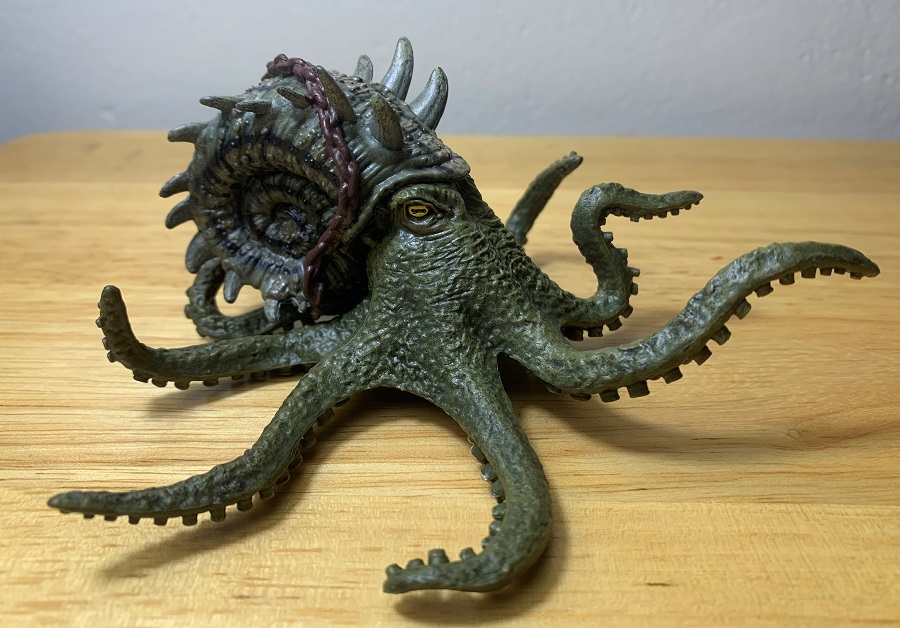
In recent years the kraken has largely been forgotten and relegated to myth and legend, and it’s now assumed that the giant squid (Architeuthis dux) is the actual species responsible for old tales of the kraken. The problem with this is that the giant squid only reaches a modest length of about 43’ (13 meters), not nearly large enough to sink ships, create whirlpools, or be mistaken for an island. Indeed, there is no evidence that the giant squid has ever snatched a sailor from a ship, let alone sunk a ship. No, the kraken is indeed a real animal, and today we’re looking at Papo’s interesting take on the monstrous mollusk.
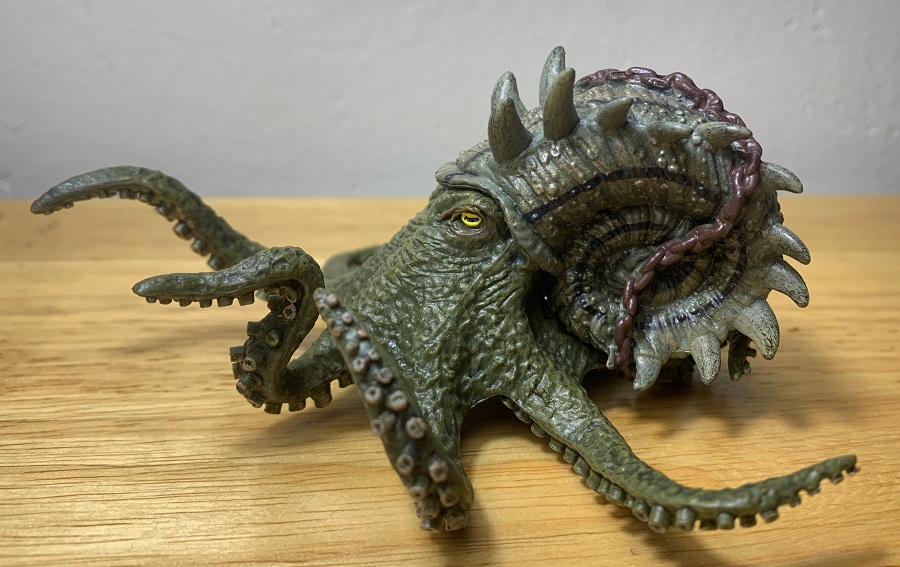
The 2020 Papo kraken is a scientifically accurate representation of the species, and perhaps the only accurate representation of it. In pop culture the kraken is usually depicted as an enormous octopus, squid, or Greek Titan. We now know that the kraken is actually the last surviving species of ammonite, a clade of shelled cephalopods that was thought to have gone extinct at the end of the Cretaceous period, 65 million years ago.
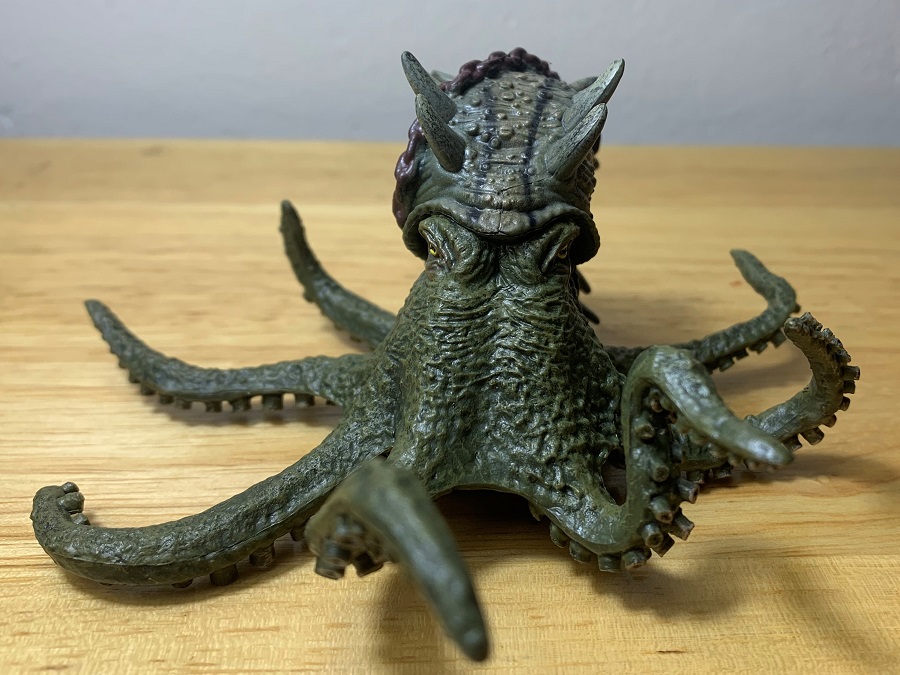
Papo’s kraken displays the coiled shell that helps identify the kraken as an ammonite. That the kraken is an ammonite makes sense, since it is often mistaken for an island. It is easy to see how, when at the surface, the shell of the kraken would look like a small bit of land jutting from the sea. The shell is decorated with pointed projections running down its edges and a bumpy, ridged texture throughout. A chain can be seen tangled around the shell, illustrating the disastrous effects that human pollution has had on the species. Indeed, the kraken is highly endangered due to climate-change and the overhunting of its principal food source, whales.
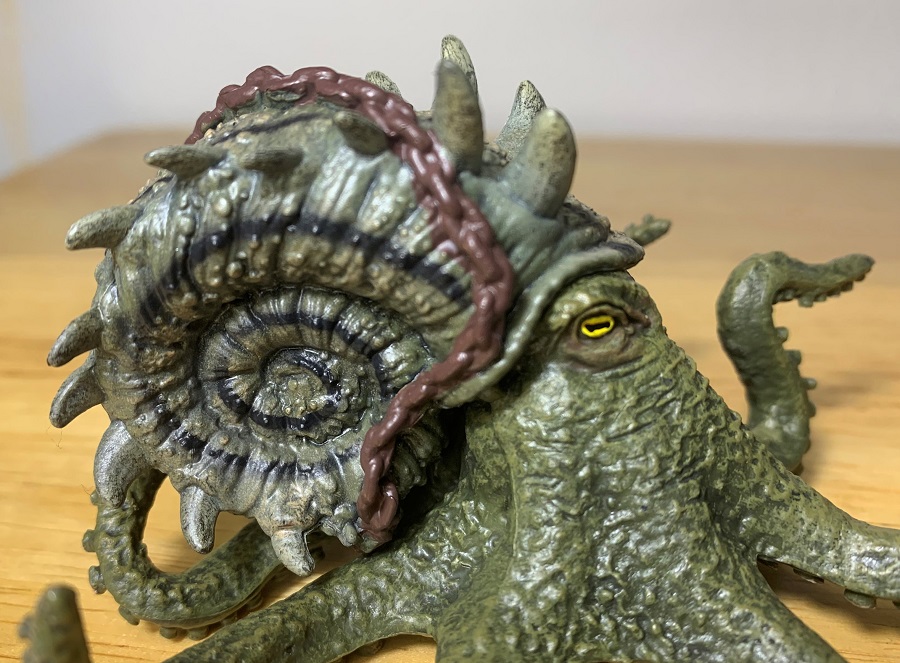
Papo’s kraken possesses 8 arms, like an octopus, and no tentacles like you would find on a giant squid. Another reason why attributing kraken sightings to the giant squid doesn’t work. Each arm has twin rows of suckers running down its length and a cavernous mouth is sculpted at the center of where all the arms join together. The body is nicely detailed with small bumps and pitting that make the flesh appear tough yet malleable.

The figure measures about 4.5” (11.43 cm) long and stands about 2” (5.08 cm) tall and this is my only real criticism of the toy. It’s quite small. Few that have seen an actual kraken have lived to tell the tale, let alone take accurate measurements, so the actual length of the creature is unknown. Still, no matter how you cut it the Papo figure is pitifully small. Too small to sink proper toy ships in the bathtub.
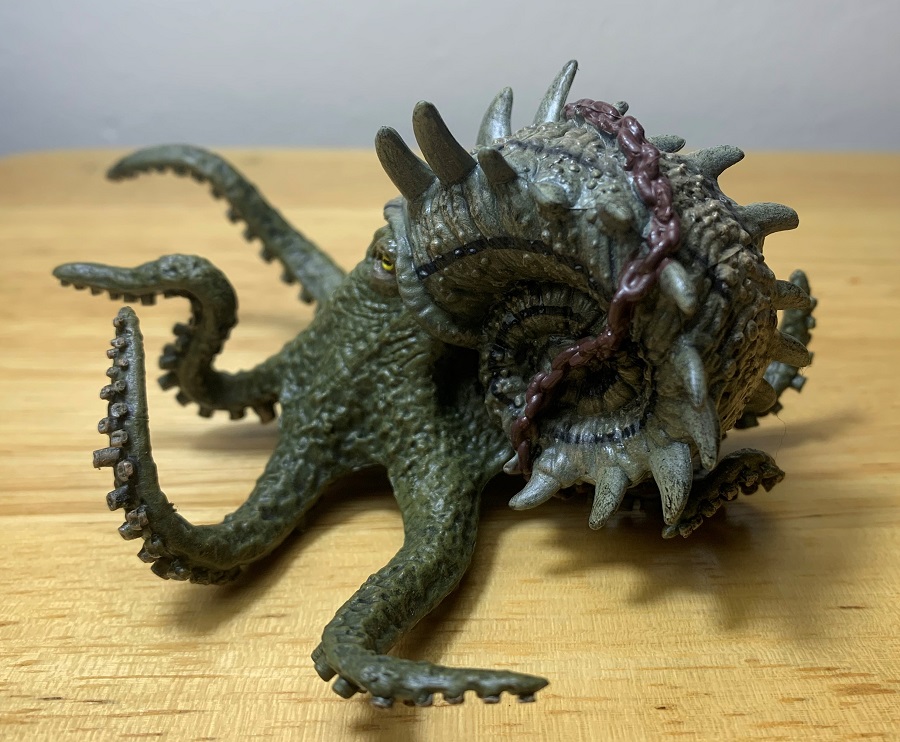
The Papo kraken is painted dull green with brown suckers and a gray shell. The shell has black stripes running along its top and sides and the eyes are yellow with black, horizontal pupils. This coloration is accurate and allows the actual kraken to hide unseen on the sea floor or along canyon walls. An adult kraken has no natural predators but still relies on ambush to capture its prey, so camouflage is necessary. Like other cephalopods the kraken can change its color and texture, one reason that sightings of the animal are few and far between.

The Papo kraken is the only kraken figure to deviate away from the more traditional octopus and squid-like appearance erroneously attributed to this animal. Thankfully, this means it also stands out on the shelf as the unique and distinct creature that it is. Unfortunately, the small scale of the figure means you’ll be hard pressed to find toys to scale it with. The Papo kraken is still in production and retails for about $9. Your collection won’t be complete without this totally accurate figure of an actual, real animal.

Disclaimer: links to Ebay and Amazon on the AnimalToyBlog are affiliate links, so we make a small commission if you use them. Thanks for supporting us!




I didn’t realize the Kraken was real. You learn something every day. 😉
I do hope Papo or Safari or any other companies bestows more cryptids on us in the future. There really aren’t that many at the moment unless you count dragons and griffins and the like.
I also hope next year’s April 1 entry is a Mothman.
I very nearly reviewed a mothman, but not the Safari one. I have a Funko Pop Fallout 76 mothman. Maybe next year…